Kenya 2019 – 1st week in Nairobi Improvisation is the way to go!
Categorised in: Kenya 2019, PWB Central, PWB TOURS past, present, future
By Performers Without Borders
When you get to Kenya, you quickly realise that things work a bit differently here. You need to have an open mind and the ability to adapt to unexpected situations.
One of our Partner Organisations: GRT, has been amazing at helping us out for our first week in Nairobi when things didn’t go as planned.
GRT, Group for Transcultural Relations, works with street families and especially street children in Nairobi. Their aim is to empower them, give them a better future and an alternative to the struggles that they are facing living in slums and on the streets. GRT promotes the rehabilitation and inclusion of these people, that in the attempt of escaping their situation often are victim to drug addiction, including inhaling solvents such as glue and jet fuel.
Chapter 1: Change of plan
- Original Plan:
Start with our first project on tour. - Problem:
Our first partner doesn’t have the capacity for us as planned and we can’t go. - Solution:
Rent a super nice AirBNB in Nairobi, message all the other Partner Organisations asking if they have work for us. - Success:
Get a response from GRT, Group for Transcultural Relations, that we can come that week already and do some workshops with street families.
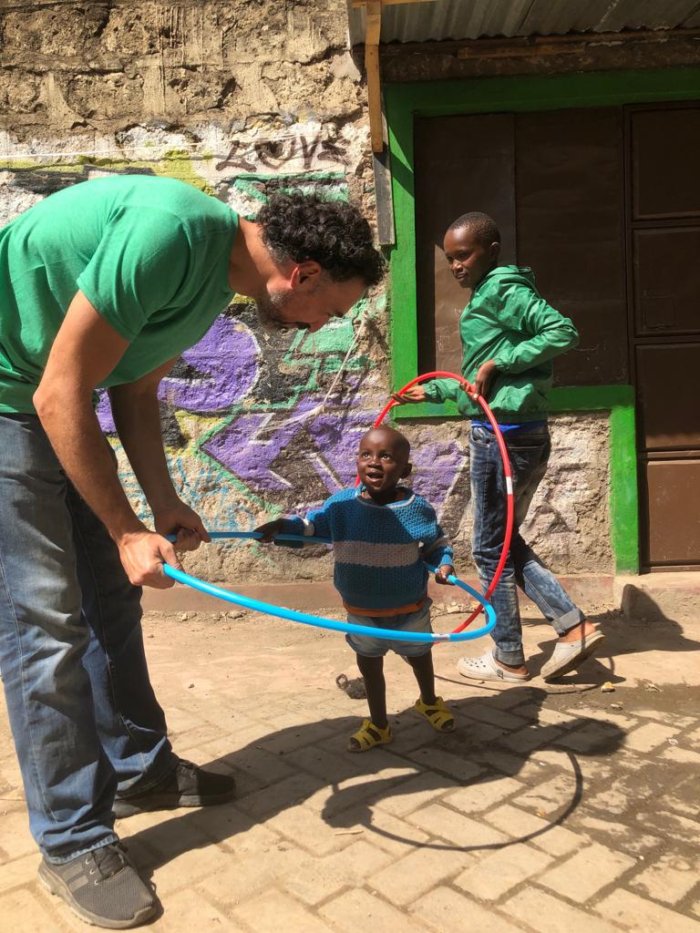
Chapter 2: First Workshop – First Pancake
- Original Plan:
Go to Mlango Kubwa to teach Streetfamilies. Play some games with them to raise the energy. Split them up into 3 groups that are going to rotate through the 3 different stations: hula hoop, juggling and parkour. Each for 20 minutes. Everyone has a workshop plan, and people will learn new things. - Problem:
Teaching a hula hoop and a juggling workshop in the same fairly small space for the number of people that are in it does not work. Kit and people become a big mish-mash.
Teaching people, that have a limited body awareness due to their drug addiction, parkour is difficult. - Solution:
Just go with the flow!
Let people just try out an play around with the hoops and the juggling balls. Start with really basic acrobatics like forward rolls and slowly step up the game. - Success:
Everyone is happy to just try and play. The smiles and the happiness that get spread is contagious and the pride in the eyes of someone who has just learned a trick is golden!
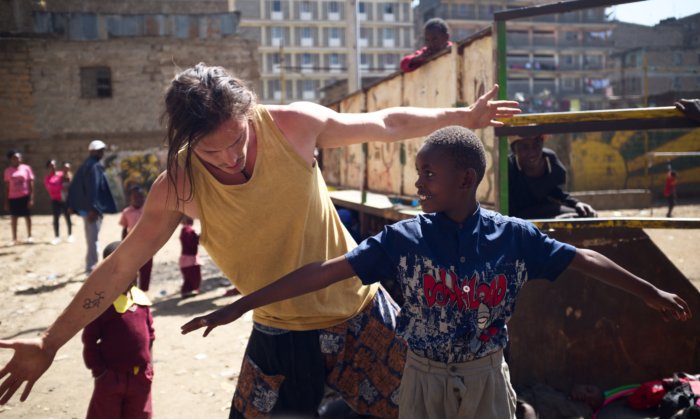
Chapter 3: Second Workshop – It’s going to be much smoother then the first one!
- Original Plan:
We will work with a smaller group of people and we expect that they are less dependent on drugs. We will have a community centre to teach in and we will be able to stick to our system of workshops. - Problem:
The room that we were meant to teach in got taken over by another group and we have to work in a tiny room that can just about fit the 30 people sitting on chairs along the walls of the room. Definitely no way we can properly teach a workshop! There’s still quite a lot of glue around that makes the air really heavy. The participants are teenagers and hard to engage and to impress. - Solution:
Improvise!
Do little showcases of the different skills and props we have: partner-acro, poi, hoop, juggling, clowning. You can’t teach, so try and entertain!
Get some people to try some easy acrobatics and juggling with us or each other whilst the rest of the group is watching. - Success:
At least a good amount of the people are entertained and some even try out and learn new things. Some of them are super interested and want to learn more. Everyone get’s a taste of what they can learn when we come back in two weeks.
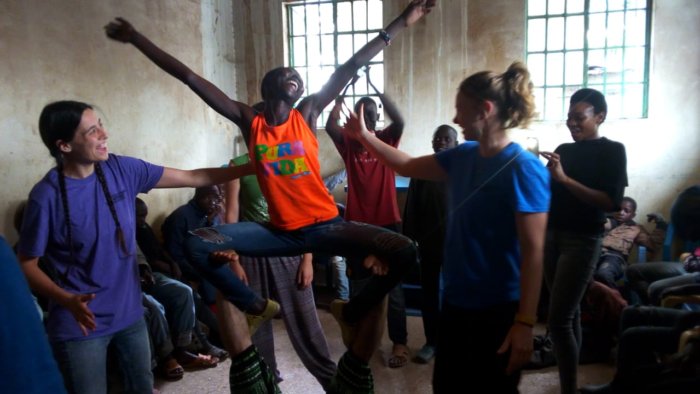
Chapter 4: This time our plan will definitely work!
- Original Plan:
There will be less people as lots of them will be playing football. We will share the football field with them. We will not have a rotating system but everyone is going to do hoop, juggling and acro for half an hour after a warm-up and games session. - Problem:
Very tiny, very cute children from around the area that are supposed to be at school are getting drawn to us as Benjamin starts a little juggling show whilst we are waiting. More little children come and start mixing with the streetkids that we are actually here to be working with.
There is no way we can share the football field as the players are really into their game. We move to the side street next to the football field. More tiny children from the area are coming and start to form a crowd around Benjamin. There is no way we feel we can separate the tiny children from the street families that we are actually meant to be working with. - Solution:
Just go with the flow and improvise! We start getting hula hoops and acro mats out. It’s a crazy hustle bustle, more and more people join, we are on a public street… But everyone can play and have a go. The girls of the team, Abi, Fer and I leave Hecor, James and Benjamin with the crowd. We go to a community centre to teach a small group of women, usually these women stand at the back during these sessions so taking them away from the group allows them to join in. It is a really nice and calm workshop with only 9 women and girls in a nice shady yard. We teach hula hoop and poi and everyone has a nice time. After about an hour, we rejoin the boys again and find them still surrounded by the children and tired out, but alive. - Success:
Working with the small group of women was really valuable. Being female in Kenya and especially in the streets is not easy as mysogyny and harassment is common. So giving the women a space where they are not suppressed by men, where they can be free, and be themselves is important and empowering for them.
Also having a big play session in the street worked out in the end as there was space for everyone.
Again: Lots of fun and play and happy and proud smiles!
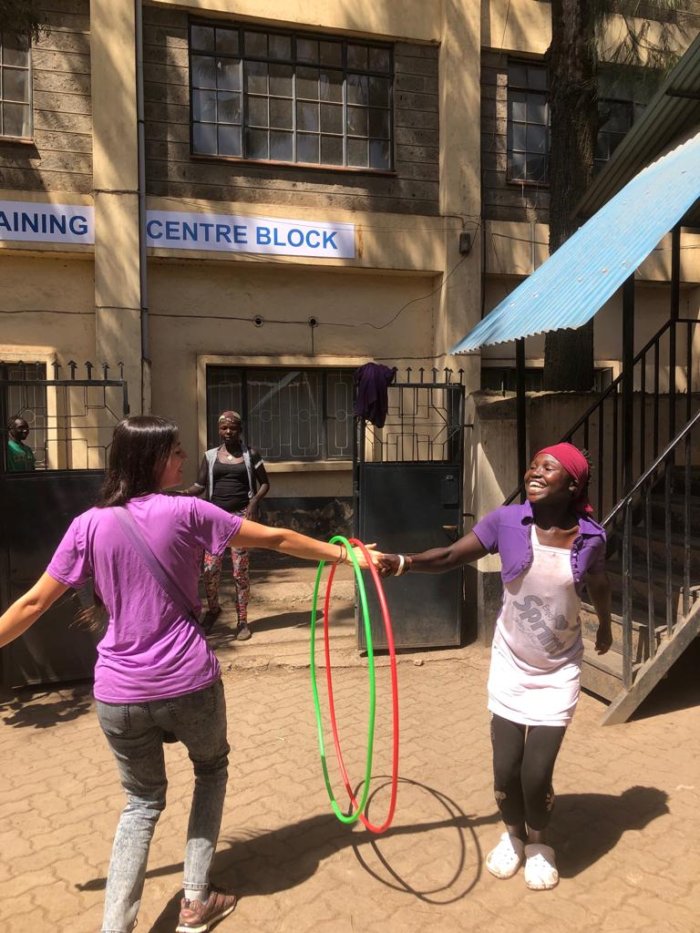
Conclusion:
It is great to have a plan but even more important to be able to adapt and to improvise.
Keep that in mind and you’ll be able to make the best out of any unexpected or tricky situation!
Working with the street families in Mlango Kubwa and at Pumani Social Hall was really special. Seeing the situation of the people there was not easy. Most of them are addicted to inhalants and the plastic bottle filled with glue or the piece of fabric dipped in jet fuel is a constant attribute of their appearance, even their personality. Often it doesn’t even leave their mouth and putting the bottle to the side is not easy for a lot of the people. What hit me the most was to see how young some of the children still are. You do see homeless people all across the world, in europe, in the so called ‘first world countries’. And you know that there are many, way too many children having to live on the streets and in slums in third world countries. But seeing it right in front of you makes it become harsh reality.
Nevertheless, once we started working with them, teaching, engaging and playing, I didn’t see people that have a hard life living on the street and being addicted to drugs. What I saw were people that were super happy to try out, play and learn. I saw people having fun, smiling and laughing. And I saw people that were incredibly welcoming, openhearted and happy to see us.
So even though nothing went as planned, we had a great and very rewarding experience and I am very much looking forward to go back to those places and the people we met there for another week of teaching, playing, learning and spreading smiles!
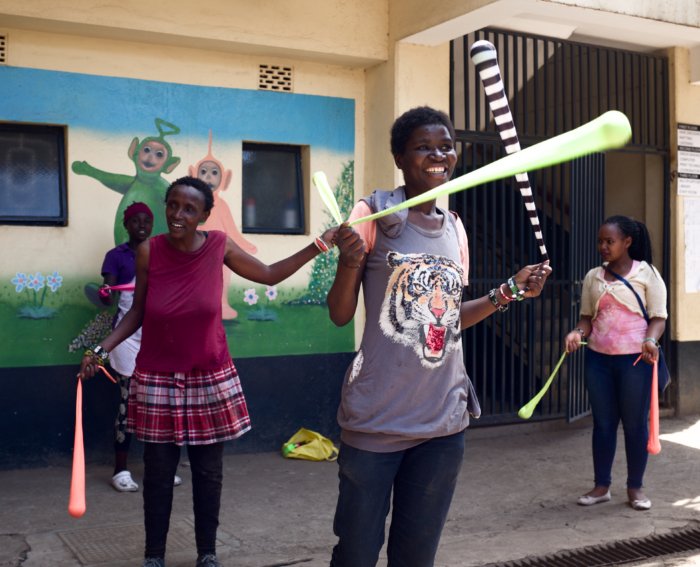

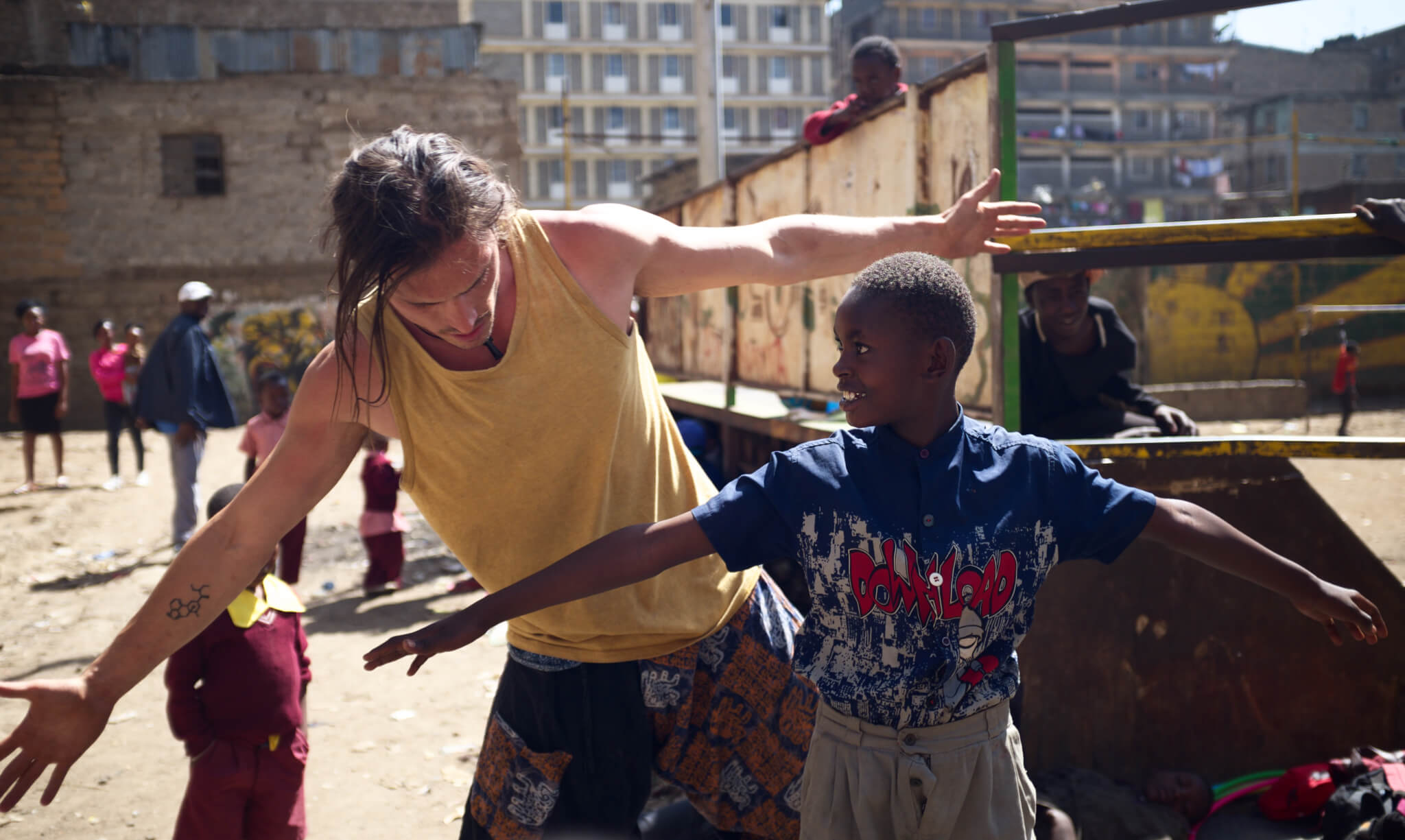
Add the first comment?
Post a comment?
Comments are closed here.